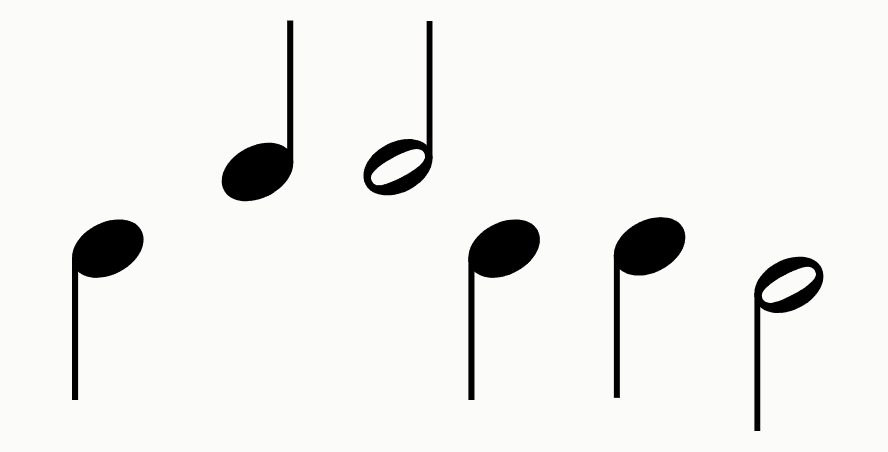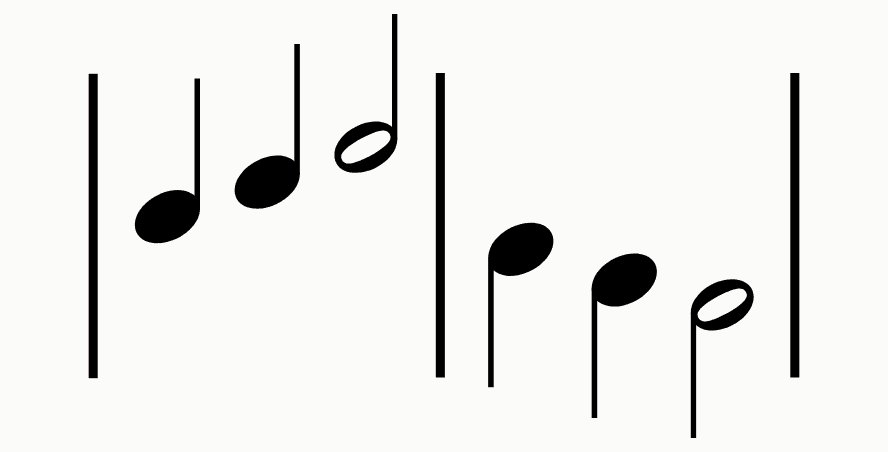
These pre-reading elements in piano music are valuable tools for helping new students build foundational skills and understand key concepts of music before diving into traditional notation. Here's a breakdown of how each element supports the learning process:
1 | Off-Staff Notation
 Off-Staff Notation
Off-Staff Notation
This approach introduces note reading early, focusing purely on the concept of pitch and movement. By presenting notes that float above or below a staff, students are not overwhelmed by complex notation rules. They can simply follow the up-and-down movement of the notes, helping them develop spatial awareness of how pitch changes. It makes the learning process more intuitive and accessible, especially for younger or beginner learners.
2 | Off-Staff Clefs

Sometimes "floating" or off-staff clefs are placed at the beginning of music, this helps students distinguish between the right and left hands early on. By placing the clef symbols near the notes, students can immediately link them to specific hands, making it easier to understand which clef corresponds to which hand. This step simplifies the process of developing hand coordination and familiarity with the role of each clef before the more complex rules of reading a full staff are introduced.
3 | Note Names in Noteheads
 Note Names in Noteheads
Note Names in Noteheads
Placing note names directly in the note heads helps students make a direct connection between written notation and the physical piano keys. For beginners, this reinforces both the symbolic and practical aspects of music learning. It also reduces the cognitive load of having to remember the note names independently, as the names are clearly displayed, aiding in faster memorization and a smoother transition to more advanced music reading.
4 | Bar Lines
 Bar Lines
Bar Lines
By using bar lines to visually segment music into smaller units, new students can begin to grasp the concept of musical structure without needing to understand time signatures immediately. Bar lines help students see that music is organized into measures, which can be thought of as "chunks" or "groups" of beats. This sets up the idea of rhythmic organization, making it easier to later introduce more complex concepts like time signatures, tempo, and rhythmic patterns.
5 | Basic Intervals: Steps and Skips

Teaching intervals by comparing the relative vertical distance between two floating notes allows beginners to understand the relative distance between pitches without the complexity of reading the traditional staff. The concept of "steps" (adjacent notes) and "skips" (leaps between notes) is easier to understand by focusing on the space between the notes rather than getting bogged down with precise notation details. This helps in building an early understanding of how melodies are constructed, even without fully reading all the notes on the staff.
These pre-reading elements gradually guide beginners to make connections between the physical piano, music notation, and fundamental musical concepts. By using simple, accessible approaches like these, students can build confidence and a solid foundation before moving into more challenging music theory and notation.